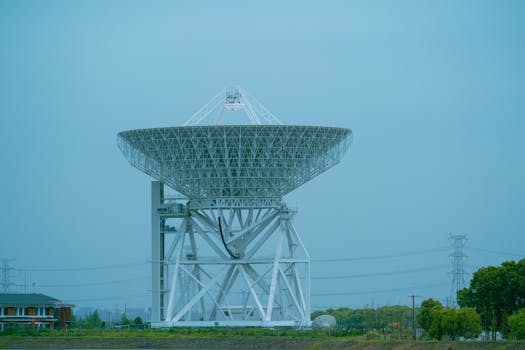
Harnessing the Skies: New Technologies Transforming Satellite Communications
Harnessing the Skies: New Technologies Transforming Satellite Communications is revolutionizing the way we communicate. With the increasing demand for global connectivity, satellite communications have become a vital part of modern telecommunications. Recent advancements in technology have enabled faster, more reliable, and more efficient satellite communications, opening up new possibilities for various industries and applications.
Introduction to Satellite Communications
Satellite communications involve the use of artificial satellites in orbit around the Earth to transmit and receive data, voice, and video signals. Satellites act as repeaters, amplifying and re-transmitting signals to extend their coverage area. This technology has been used for decades, but recent innovations have significantly improved its capabilities and potential.
Advancements in Satellite Technology
Several new technologies are transforming the field of satellite communications. One of the most significant advancements is the development of high-throughput satellites (HTS). These satellites use multiple spot beams to provide higher bandwidth and faster data transfer rates, making them ideal for applications such as broadband internet, video streaming, and mobile connectivity.
Another important innovation is the use of phased array antennas. These antennas use multiple small antennas to steer and shape the beam, allowing for more precise and flexible signal transmission. This technology enables the creation of satellite constellations, which are networks of multiple satellites working together to provide global coverage and increased capacity.
Applications and Industries
The advancements in satellite communications have numerous applications and benefits for various industries. Some of the key areas include:
Maritime and Aviation: Satellite communications provide critical connectivity for ships and aircraft, enabling navigation, communication, and safety services. New technologies have improved the reliability and speed of these services, enhancing safety and efficiency.
Remote Connectivity: Satellite communications are often the only means of connectivity in remote or underserved areas. New technologies have made it possible to provide faster and more reliable internet access, bridging the digital divide and enabling economic growth.
Emergency Response and Disaster Recovery: Satellite communications play a vital role in emergency response and disaster recovery efforts. New technologies have improved the speed and reliability of these services, enabling faster and more effective response and recovery.
Conclusion
In conclusion, new technologies are transforming the field of satellite communications, enabling faster, more reliable, and more efficient connections. The advancements in high-throughput satellites, phased array antennas, and satellite constellations have opened up new possibilities for various industries and applications. As the demand for global connectivity continues to grow, satellite communications will play an increasingly important role in shaping the future of telecommunications.